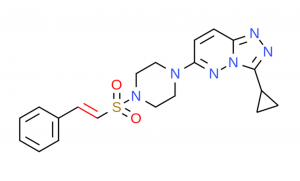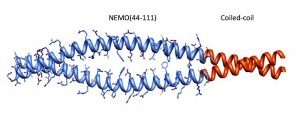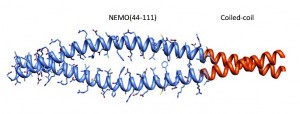Scientific Reports 5, Article number: 9893 doi:10.1038/srep09893
A novel caspase 8 selective small molecule potentiates TRAIL-induced cell death
Octavian Bucur, Gabriel Gaidos, Achani Yatawara, Bodvael Pennarun, Chamila Rupasinghe, Jérémie Roux, Stefan Andrei, Bingqian Guo, Alexandra Panaitiu, Maria Pellegrini, Dale F. Mierke & Roya Khosravi-Far
Recombinant soluble TRAIL and agonistic antibodies against TRAIL receptors (DR4 and DR5) are currently being created for clinical cancer therapy, due to their selective killing of cancer cells and high safety characteristics. However, resistance to TRAIL and other targeted therapies is an important issue facing current cancer research field. An attractive strategy to sensitize resistant malignancies to TRAIL-induced cell death is the design of small molecules that target and promote caspase 8 activation. For the first time, we describe the discovery and characterization of a small molecule that directly binds caspase 8 and enhances its activation when combined with TRAIL, but not alone. The molecule was identified through an in silico chemical screen for compounds with affinity for the caspase 8 homodimer’s interface. The compound was experimentally validated to directly bind caspase 8, and to promote caspase 8 activation and cell death in single living cells or population of cells, upon TRAIL stimulation. Our approach is a proof-of-concept strategy leading to the discovery of a novel small molecule that not only stimulates TRAIL-induced apoptosis in cancer cells, but may also provide insights into the structure-function relationship of caspase 8 homodimers as putative targets in cancer.
http://www.nature.com/srep/2015/150511/srep09893/full/srep09893.html



